Russell Phillips's Blog, page 10
December 3, 2015
I oppose air strikes in Syria, not effective military intervention
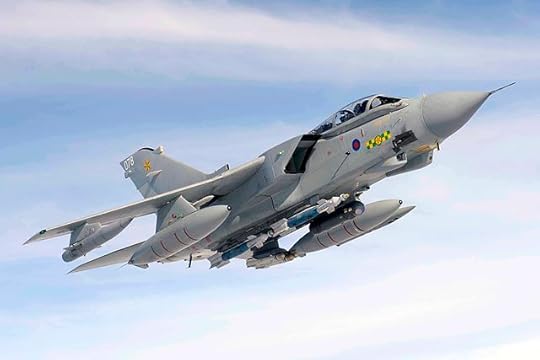
Photo: SAC Scott Ferguson/MOD [OGL], via Wikimedia Commons
On Wednesday, the UK parliament voted to conduct air strikes against ISIL in Syria, which I believe was a mistake. There seems to be an assumption by those in favour of bombing that those of us opposed to it are opposed to any form of military action. That’s not the case. I’m in favour of effective military action against ISIL.
I oppose the bombing because military action should be taken in order to achieve a clearly defined aim. A strategy should be worked out to achieve that aim. Appropriate tactics should be used in support of the strategy. Bombing is a tactic, but I don’t see a viable strategy or a clear aim. I see “we must do something. This is something, so we must do this“.
I can’t think of a single time that bombing alone has worked. The blitz made the British people more determined to fight, not less. Recently I’ve read accounts of German soldiers on D-Day. Almost all of them mentioned the bombing of German cities, and how they’d lost someone, or knew someone who had. They saw the British and Americans as murderers, and it increased their willingness to fight. American bombing of North Vietnam didn’t persuade them to stop supporting the Viet Minh.
On the other hand, the British army has conducted several successful counter-insurgency campaigns, such as those in Borneo and Malaya. All of them emphasised the importance of support from the local population. None of them involved bombing as a major tactic.
Tweetable
Opposing air strikes in Syria doesn’t mean opposing effective military intervention – Click to tweet
The post I oppose air strikes in Syria, not effective military intervention appeared first on Russell Phillips.
Related:
Lidice and the Unearthed Project Earlier this month, I saw a film put on by...
Nuclear Deterrence Recently, there has been debate in the UK over the...
Improvements To UK Copyright Law I was pleased to discover recently that, from the 1st...
November 11, 2015
Remembrance Day: Teenagers and War
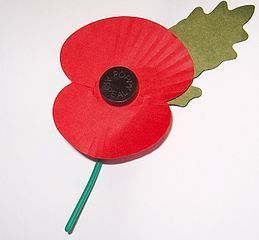 Earlier this year, Lieutenants Kristen Griest and Shaye Haver became the first women to graduate from the US Army’s Ranger School. Not surprisingly, this prompted a lot of talk about women in combat. Retired US Admiral Eric Olson’s remarks were widely quoted:
Earlier this year, Lieutenants Kristen Griest and Shaye Haver became the first women to graduate from the US Army’s Ranger School. Not surprisingly, this prompted a lot of talk about women in combat. Retired US Admiral Eric Olson’s remarks were widely quoted:
“I think that we need to ask ourselves as a society if we are willing to put women in front-line combat units to take the first bullet on target. Are we willing to cause every 18-year-old girl to sign up for selective service? Are we willing to cause women to serve in infantry units against their will as we do men?”
Today is Remembrance Day in the UK. I think it’s an excellent time to consider Admiral Olson’s points. Personally, I believe that he is mistaken to focus on the gender of the person being asked to take a bullet. I believe the question should be “Are we too willing to send teenagers to war?” Even that is something of a euphemism, hiding the true question. War means death. When a country decides to go to war, it decides that a cause is so important that people should die for that cause. Some of those people will be teenagers. So, what we should be asking is, “Are we too willing to send teenagers to die?” In many cases, I think the answer is yes, and that is the problem.
We should not be so eager to send young people to die.
The post Remembrance Day: Teenagers and War appeared first on Russell Phillips.
Related:
Remembrance Day: The hell where youth and laughter go Today is Remembrance Day in the UK. I have a...
Britain Did Not “Stand Alone” in 1940 On Remembrance Day last year I wrote, “I consider Remembrance...
Tank Fest 2015 I spent last weekend at Bovington Tank Museum, attending Tank...
October 21, 2015
AFV Alphabet: U is for Urutu
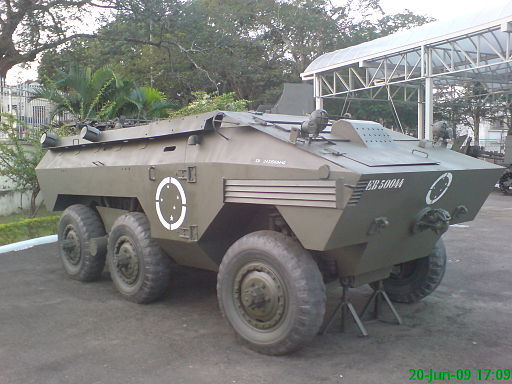
The EE-11 Urutu is a wheeled, 6×6 armoured personnel carrier developed by Engesa of Brazil, and shares many components with the EE-9 Cascavel armoured car. Production began in 1974, and it was adopted by the Brazilian armed forces. It can carry 12 men in addition to the two crew, and it is amphibious, driven by a propeller when in the water. Production stopped in 1987, but the Brazilian vehicles have been upgraded since then, pending replacement by the new VBTP-MR.
The Urutu has been widely exported, and served as the base vehicle for several variants. It has a top speed of 55mph and a range of 530 miles. Armour is up to 12mm thick, and it is normally armed with a 12.7mm machine gun.
The post AFV Alphabet: U is for Urutu appeared first on Russell Phillips.
Related:
AFV Alphabet: G is for Gvozdika The 2S1 Gvozdika self-propelled 122mm howitzer was accepted for service...
AFV Alphabet: H is for Hornet The FV1620 Humber Hornet was an early ATGM carrier, which...
AFV Alphabet: I is for Infanterikanonvagn 91 “Ikv 91 a” by Mats Persson – Own work. Licensed...
October 6, 2015
Operation Nimrod now available
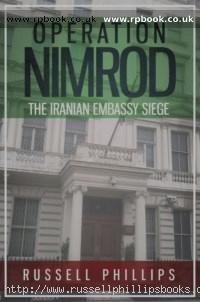 Operation Nimrod is now available in paperback, ebook, audio book, and app formats.
Operation Nimrod is now available in paperback, ebook, audio book, and app formats.
Ebook
The ebook is available from Amazon, Apple iBooks, Kobo, Barnes & Noble, Google Play, and Wargame Vault.
Paperback
The paperback is available from Amazon, Waterstones, and Barnes & Noble.
Audio Book
The audio book is available from Audible and iTunes.
App
The app is available on Google Play and the Amazon Appstore.
The post Operation Nimrod now available appeared first on Russell Phillips.
Related:
Operation Nimrod: The Iranian Embassy Siege On 29th April 1980, British police assured Iran that their...
Operation Nimrod available for pre-order I’m very happy to announce that Operation Nimrod will be...
Self-Publishing: A Primer This blog post was featured in Carnival of the Indies,...
September 22, 2015
AFV Alphabet: T is for Tiger
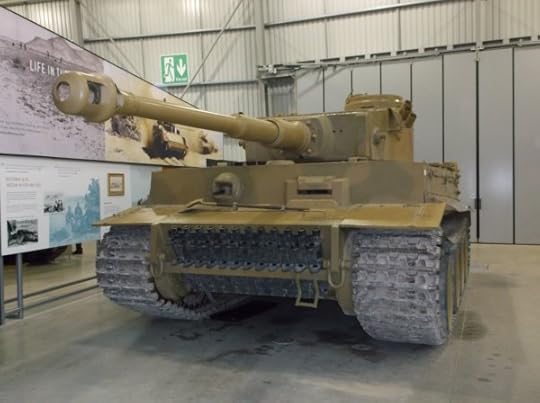 Tiger 131 at Bovington Tank Museum
Tiger 131 at Bovington Tank MuseumThe Panzerkampfwagen VI Tiger Ausf E might be an obvious choice, but it’s such an iconic vehicle that I decided it deserved a place.
The Tiger was developed in response to Soviet tank designs such as the T-34 and KV-1, which took the Germans by surprise when they invaded in 1941. The Tiger had significantly increased firepower and armour compared to previous vehicles, which led to a dramatic increase in weight to 54 tonnes. This increased weight put a great deal of strain on the automotive components, leading to an increased rate of breakdowns.
The 88mm gun already had a fearsome reputation among Allied tank crews, and the combination of that gun with thick armour (100-120mm at the front) led to the Tiger being feared and respected. The Sherman’s 75mm gun could not penetrate the Tiger’s frontal armour at any range, and could only penetrate the side armour from 100m. The 17 pounder-armed Sherman Firefly, however, could penetrate the frontal armour at 1,000m range.
1,347 Tigers were built (by comparison, over 8,500 Panzer IV and around 6,000 Panthers were produced), but the Tiger’s impact on those who encountered it was out of all proportion to the numbers in which it was fielded. In Western Europe, it was common for any tank sighting to be reported as a Tiger, despite the relatively low number of Tigers compared to other German tanks.
The post AFV Alphabet: T is for Tiger appeared first on Russell Phillips.
Related:
AFV Alphabet: M is for Maus The Maus was a World War II German tank design,...
AFV Alphabet: D is for Deerhound “T17-Deerhound-armored-car-2“. Licensed under Public domain via Wikimedia Commons. The T17...
AFV Alphabet: K is for Kangaroo The Kangaroo was an early armoured personnel carrier, created by...
September 9, 2015
Win a copy of Operation Nimrod
If you’re on Goodreads, I’m giving away paperback copies of Operation Nimrod. Click here to enter.
.goodreadsGiveawayWidget { color: #555; font-family: georgia, serif; font-weight: normal; text-align: left; font-size: 14px;
font-style: normal; background: white; }
.goodreadsGiveawayWidget p { margin: 0 0 .5em !important; padding: 0; }
.goodreadsGiveawayWidgetEnterLink {
display: inline-block;
color: #181818;
background-color: #F6F6EE;
border: 1px solid #9D8A78;
border-radius: 3px;
font-family: "Helvetica Neue", Helvetica, Arial, sans-serif;
font-weight: bold;
text-decoration: none;
outline: none;
font-size: 13px;
padding: 8px 12px;
}
.goodreadsGiveawayWidgetEnterLink:hover {
color: #181818;
background-color: #F7F2ED;
border: 1px solid #AFAFAF;
text-decoration: none;
}
Goodreads Book Giveaway

Operation Nimrod
by Russell Phillips
Giveaway ends October 05, 2015.
See the giveaway details
at Goodreads.
The post Win a copy of Operation Nimrod appeared first on Russell Phillips.
Related:
Pink is for Girls (and the SAS, Spitfire pilots…) Recently, I mentioned my AFV Alphabet series of posts to...
Operation Nimrod: The Iranian Embassy Siege On 29th April 1980, British police assured Iran that their...
August 13, 2015
AFV Alphabet: S is for Sexton
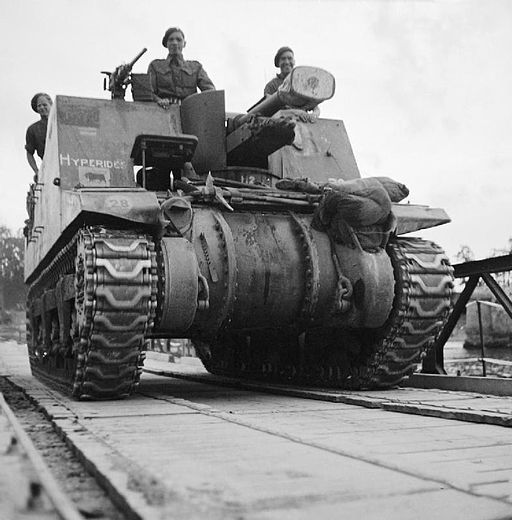
By 1942, the British army in North Africa had decided that it needed self-propelled guns, and the hastily-created Bishop self-propelled 25 pounder wasn’t good enough. They had adopted the American M7 Priest, but this was a logistical nightmare, since they were the only vehicles in British service that used a 105mm gun. What the British army really wanted was something like the Priest, but with a 25 pounder instead of a 105mm gun.
The Canadians supplied the answer. They mounted a 25 pounder gun-howitzer on the hull of a Ram tank (Canadian copy of the M3), in a similar mounting to that used on the Priest. After trials, the Canadian government ordered 124 vehicles, and the vehicle was designated “Sexton” in May 1943. Following trials in the UK, the British government ordered 300 vehicles, although these were to be built on the hulls of Grizzly tanks (Canadian copy of the M4A1 Sherman). To distinguish between the two, the Ram-based vehicles were designated Sexton Mark I, and the Grizzly-based vehicles were Sexton Mark II. A Sexton GPO (Gun Position Officer) variant was also built. This had no gun, but an extra radio, map tables, etc, and was used to direct artillery fire.
With the Sexton, the British army finally had a self-propelled 25 pounder that it was happy with. Sextons saw combat in Italy and north-western Europe, including the D-Day landings. It remained in British service until 1956.
The post AFV Alphabet: S is for Sexton appeared first on Russell Phillips.
Related:
AFV Alphabet: B is for Bishop During the western desert campaign in the early part of...
AFV Alphabet: C is for Carden Loyd tankette The term “Carden Loyd tankette” actually refers to a series...
AFV Alphabet: D is for Deerhound “T17-Deerhound-armored-car-2“. Licensed under Public domain via Wikimedia Commons. The T17...
July 29, 2015
In defence of the Tetrarch
Yesterday, Bovington Tank Museum posted a photo on their Facebook page, of a Tetrarch light tank being loaded onto a Hamilcar glider. I don’t mind admitting that I have something of a soft spot for the Tetrarch, probably because they could be air-landed in a glider.
A couple of comments on the photo caught my eye. I didn’t respond to them, because I’m not really a fan of Facebook in general, and I particularly dislike getting into arguments there. Instead, I decided to use them as prompts for a blog post 
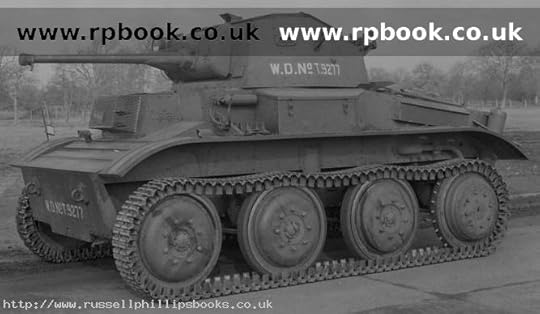
One person said that the Tetrarch was “obsolete at the start of the war, never mind 1944“. Although I agree that it was obsolete by 1944, I certainly don’t agree that it was obsolete in 1939. It must be remembered that the Tetrarch was a light tank. Its role was reconnaissance, not fighting other tanks. None the less, the Panzer III, which was intended to fight other tanks, had a 37mm main gun, comparable to the Tetrarch’s 2-pounder (40mm). Armour protection on early models of the Panzer III was also comparable to that of the Tetrarch.
A second person suggested that the British would have been better served using Daimler armoured cars instead of the Tetrarch. He notes that the Daimler had similar armour, identical armament, and better performance. On the face of it, this seems like a good point. While I don’t know the actual reasons Tetrarchs were used, I can suggest some possible ones.
First, performance. The Daimler was about 10mph faster on roads. A quick check didn’t reveal how they compared off-road, but tracked vehicles generally perform better than wheeled, so I suspect the Tetrarch’s off-road performance was at least comparable, if not better.
Second, size. The Daimler was taller and wider than the Tetrarch. The Tetrarch was a tight fit in the Hamilcar glider, so it’s entirely possible that the Daimler simply wouldn’t fit.
Finally, morale. Tanks, even small ones, are more impressive than armoured cars. The Tetrarchs were landed late on the first day of the Normandy landings. German defenders seeing the tanks wouldn’t necessarily realise that they had been landed by glider. That could lead them to believe that the invasion was progressing at a rapid pace, reducing their morale and their willingness to fight. Conversely, the men landed by glider and parachute would probably get a larger morale boost from having tanks, rather than armoured cars, alongside them, regardless of the actual effectiveness of the two vehicles.
The Tetrarchs were certainly obsolete as front line tanks by 1944, though probably still better than no armoured support at all. They were all retired in late 1944, replaced by the M22 Locust, a light tank purpose-built to be carried by glider.
The post In defence of the Tetrarch appeared first on Russell Phillips.
Related:
Tank Fest 2015 I spent last weekend at Bovington Tank Museum, attending Tank...
Lidice Unearthed Today is the 72nd anniversary of the destruction of Lidice....
AFV Alphabet: B is for Bishop During the western desert campaign in the early part of...
July 13, 2015
Operation Nimrod available for pre-order
 I’m very happy to announce that Operation Nimrod will be available in October. This is an account of the 1980 Iranian embassy siege, when six terrorists held twenty-six hostages at the Iranian embassy in London. It was finally ended when the SAS launched a daring rescue mission, as millions watched live on television.
I’m very happy to announce that Operation Nimrod will be available in October. This is an account of the 1980 Iranian embassy siege, when six terrorists held twenty-six hostages at the Iranian embassy in London. It was finally ended when the SAS launched a daring rescue mission, as millions watched live on television.
Ebook copies can be pre-ordered now at Amazon, Apple iBooks, Kobo, Barnes & Noble, and Google Play. Pre-orders are not available for the paperback or audio book editions, but both should be available at the same time as the ebook.
The post Operation Nimrod available for pre-order appeared first on Russell Phillips.
Related:
Self-Publishing: A Primer This blog post was featured in Carnival of the Indies,...
Self-Publishing: Good For Apple, Good For Readers I came upon an article in the Guardian yesterday, titled...
Buy the Paperback, get the Ebook Free On Tuesday, Amazon announced Kindle MatchBook, to be launched in...
July 3, 2015
Tank Fest 2015
I spent last weekend at Bovington Tank Museum, attending Tank Fest 2015. For those who aren’t aware, Tank Fest is an annual event, where the museum brings out a selection of vehicles and has them drive around the arena. It’s a chance to see the vehicles running, rather than stationary in a display hall.
Modern vehicles are often driven at speed, which can be a spectacular sight. Older vehicles tend to be driven slowly, and may even stop if the engine appears to be having trouble. The museum is keen to keep the vehicles in driving condition, so would rather halt a display than do potentially irreparable damage. Given that most of the historical vehicles are very rare, and in some cases the only running example, this is a sensible policy.
There were other attractions, too. The museum itself was open. There were living history displays from military re-enactment groups, and there were WWII-themed entertainers. There were fly-pasts by a Spitfire and a Hurricane. I spent most of my time in the arena, watching the various AFVs.
A particular highlight for me was the Polish T-72M, especially as it demonstrated its ability to make smoke by injecting diesel into the exhaust.
It was also good to see the Tiger running. I’ve seen it in the display hall before, but it’s even more impressive on the move. Other highlights included the Matilda 1, Panzer 38(t), Leopards, Challenger 1 & 2, and the Tank Pull.
That last one is exactly what it sounds like – teams of twelve men pulling an 8-ton Scorpion tank. I’m not much of a sports fan, but if that was included in the next Olympics, I might tune in.
The post Tank Fest 2015 appeared first on Russell Phillips.
Related:
Lidice and the Unearthed Project Earlier this month, I saw a film put on by...
Wargame Vault Deal of the Day: Red Steel Red Steel is the Wargame Vault deal of the day....
Chernobyl Children fund raising – update Back in February, I wrote that my son and I...



